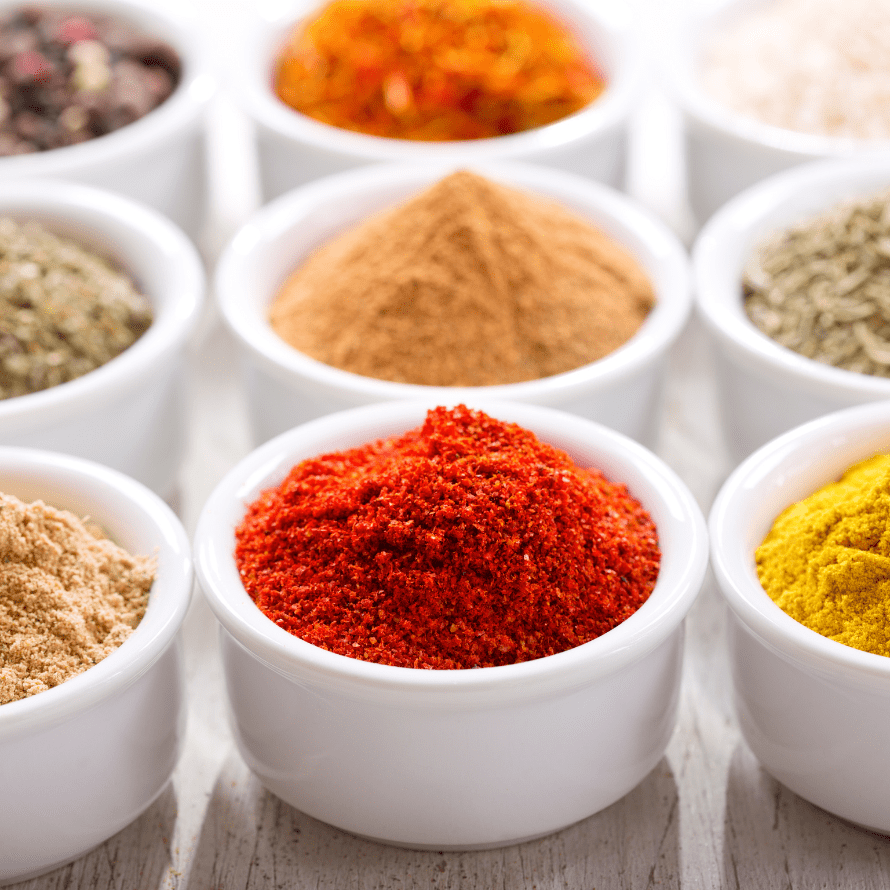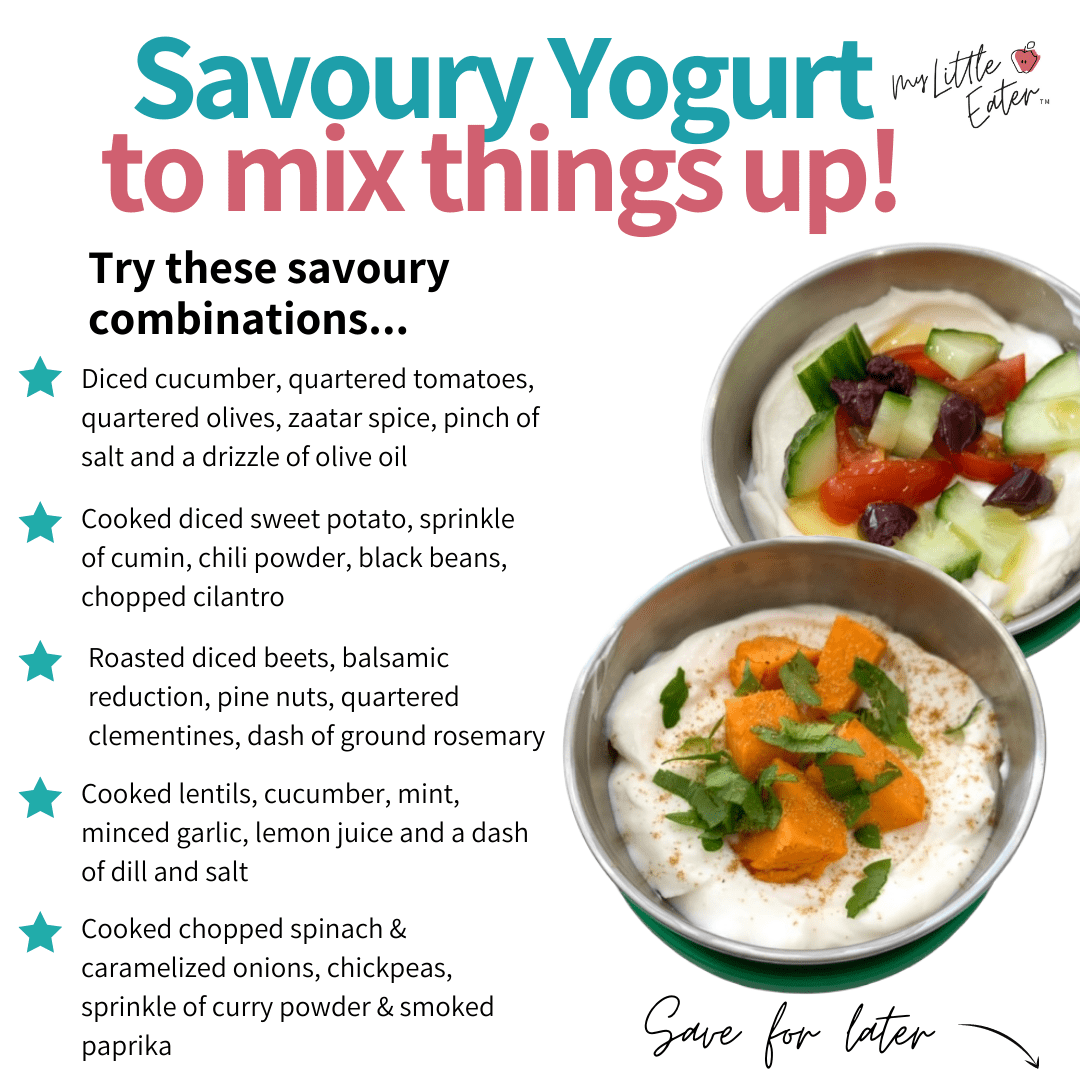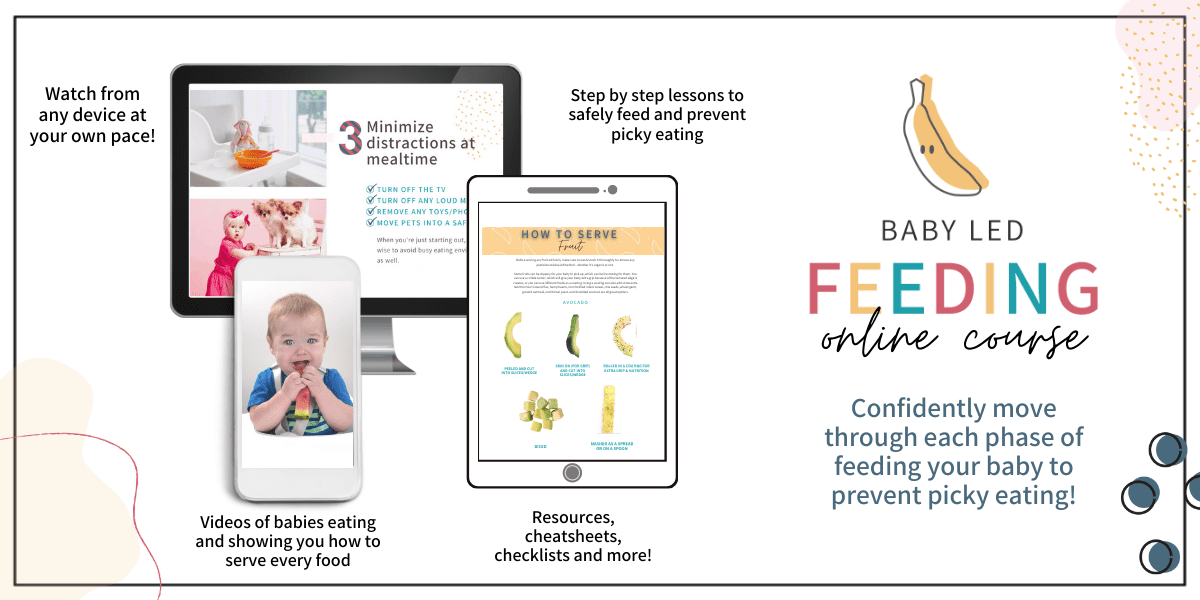
It’s been traditionally advised that bland food is best for your baby because it’s easy on the digestive system, and readily eaten. After all, cereal should be your baby’s first food, shouldn’t it? (spoiler alert: it definitely doesn’t need to be!). Research actually suggests that exposing your baby to a variety of flavours, early on, reduces pickiness, and helps them accept more and more food later on. And I’m talking about everything from seafood, meat, beans, and veggies…to herbs and spices. Not only can babies handle it…but these early months are the perfect time to prime their taste buds and help shape their taste preferences!
So, this week on the podcast I wanted to chat about this topic a bit and go over why it’s SO important that you include various spices in your baby’s diet. You can listen to the full episode here!
Four reasons why I recommend spices for babies
Let’s start with why I will always recommend you include some spices in your baby’s food, right from the very beginning!
Babies have a critical period for shaping their taste buds!
Think of this as the taste training period! The more you expose your baby to a variety of foods, and flavours, between 6-12 months, the more likely it is that they’ll accept a variety of food later on in life! This also means it will be less likely that they’ll be surprised by the flavour of spices when you do finally decide to add them at a later time, plus adding them right from the beginning of starting solids helps reduce the chances of them being picky – and who doesn’t want that? Now, I’m going to take it one step further and narrow that window even more to what my ideal really is, which is between 6 and 9 months of age. You definitely want to make sure you’re getting some spices into your baby’s food during those crucial first 3 months of starting solids. This is because by about 10 months of age some babies begin to show the first signs of pickiness, or preferences for certain foods and flavours, and you want to get that exposure in before this happens.
Breastmilk never tastes the same…so why should their food?
When you eat things like garlic, vanilla, banana, caraway, anise, and more… babies taste the difference! By flavouring food with a variety of herbs & spices, you’ll continue the benefits of flavour exposure found in breastmilk. The point here is not to exclude babies that are exclusively formula fed, but rather to emphasize the fact that babies are made to handle various flavours, and that from the first day of their life, they were capable of experiencing various spices without any issues. So bland food is not a requirement for them and it’s natural for them to experience different flavours. Additionally, if your baby is exclusively formula fed, then they wouldn’t have that exposure, and so beginning with some spices when they start solids is a great way to get those taste buds primed for new flavours.
Flavouring food with a variety of spices means you can add lots of interest and taste without the need for added salt/sugar.
This is a good tip for adults and babies alike! It also means that you can enjoy the same exciting meals as your baby without needing to set aside portions for your baby prior to adding the seasoning. That’s a win-win! Eliminate the need to make a chili for you, and then beans and a plain tomato sauce for your baby, because you don’t want to add chili powder. No, it’s totally fine to have them experience that, and really, you want them to experience that. There’s no need to start the habit of making them something separate at each meal.
There’s no indication, or research, that shows that babies prefer bland food or can’t handle strong flavours.
Now, HOT spicy foods (like lots of cayenne or jalapeño) can be a turn off for sure, so maybe hold off on those. But, go ahead and offer even some of the more potent flavours that aren’t necessarily spicy. Things like curry, cumin, oregano, turmeric, cinnamon, mint, basil…you name it! Let’s also think about babies that grow up in different cultures all over the world…babies in Thailand eat Thai food, in India they eat Indian food, etc. So they’re all getting exposure to various spices depending on what the local cuisine is like, so there’s no reason why a baby in North America, for example, can’t also experience those same cuisines. Basically, there’s no need to keep it to super one-dimensional flavours, or to no flavours at all!
Spice and Flavour Combinations to Try with your Baby
The next time you’re making something for your baby, try out one of these combinations to add some more spice and flavour to your baby’s food! Also, I just want to note that these spices can be added onto whole foods when cooking, which works well if your baby is eating finger foods, or it can also be added to purees, if you’re going the traditional route and making your own.
- Curry on cauliflower
- Turmeric in rice (you can also add some onions to your base for the rice to have more flavour)
- Mint in yogurt (or check out more ideas for savoury yogurts below!)
- Dill on salmon or tuna
- Cinnamon in oatmeal or applesauce
- Basil and paprika on chicken
- Cajun spice on sweet potato
- Lemon and lime on fish or beans (great idea, especially for beans, since it’s a non-heme iron source the vitamin C will help boost the iron absorption)
- Cumin in hummus or bean dips
- Cilantro and parsley in mashed avocado
- Ginger in applesauce or on poultry
- Nutritional yeast on broccoli
- Parmesan on asparagus
- Grated beets mixed into plain yogurt
- Banana or avocado rolled in unsweetened coconut
There are way more options than this – this is just a starter list to help you get creative on your own! I have a lot more options available in my Baby Led Feeding online course, there’s a whole downloadable resource to help make including variety in spices super easy for you. Overall, just have fun with this, and try out new things with your baby!








